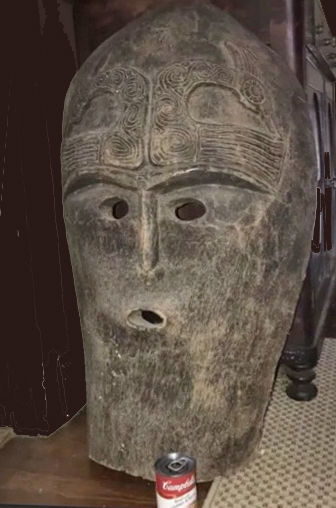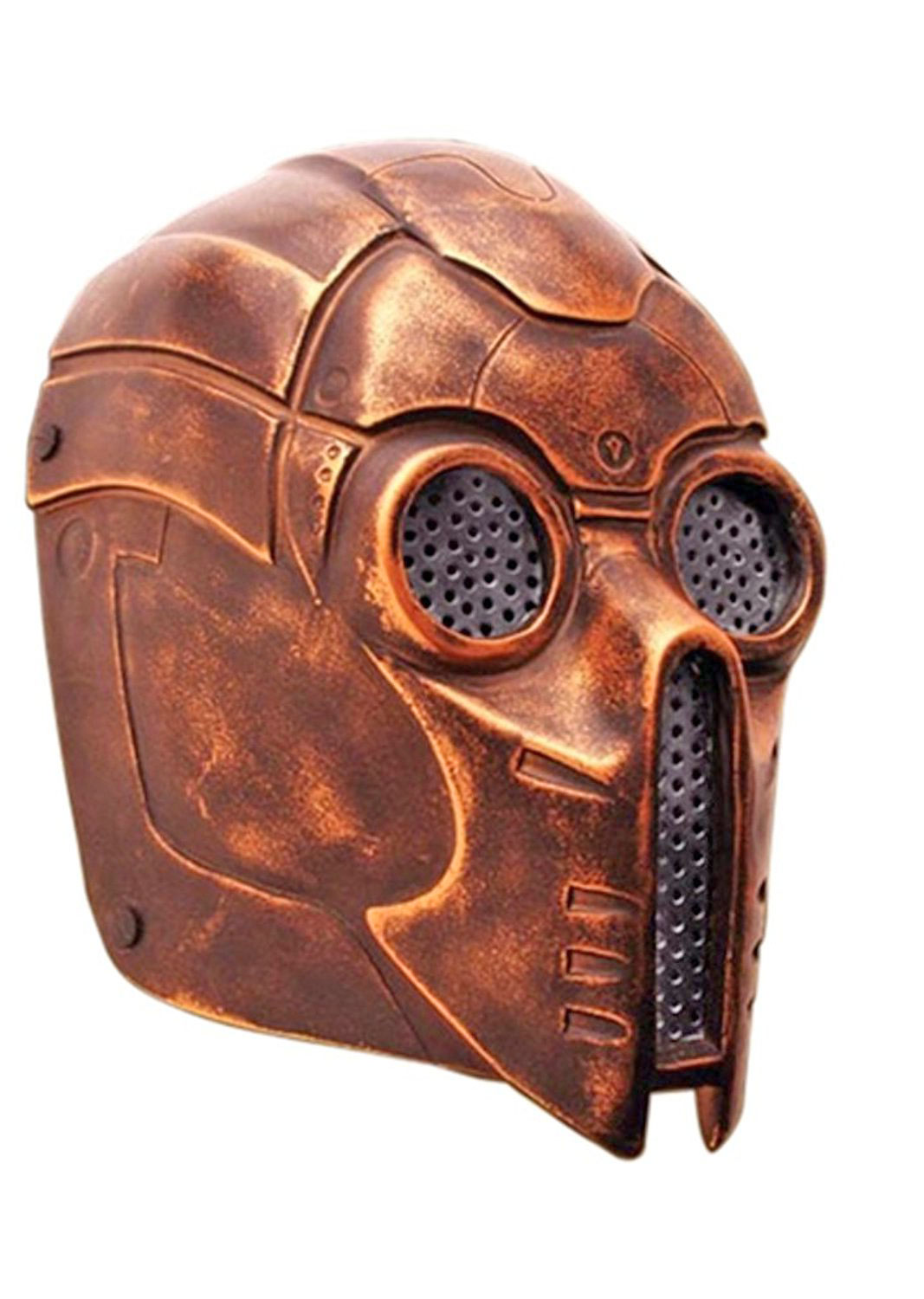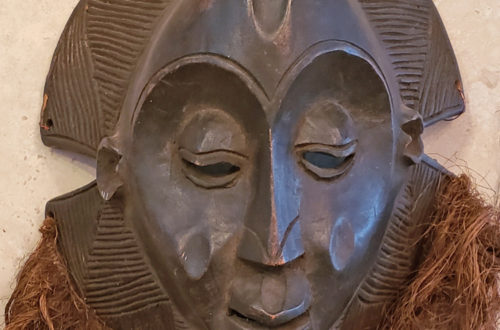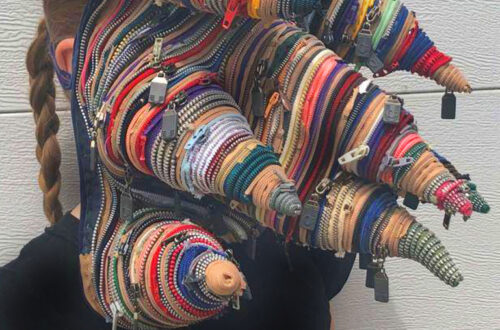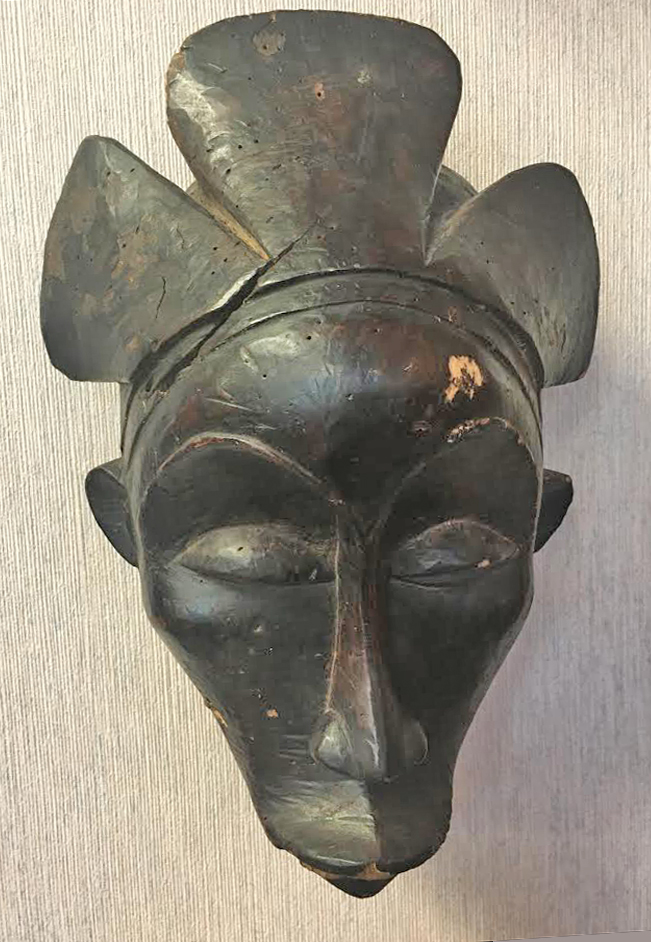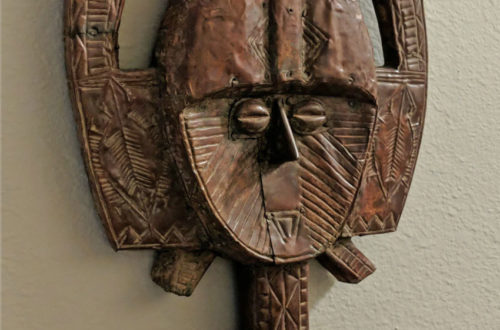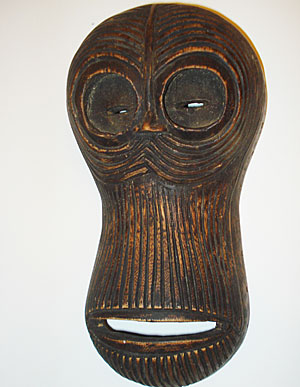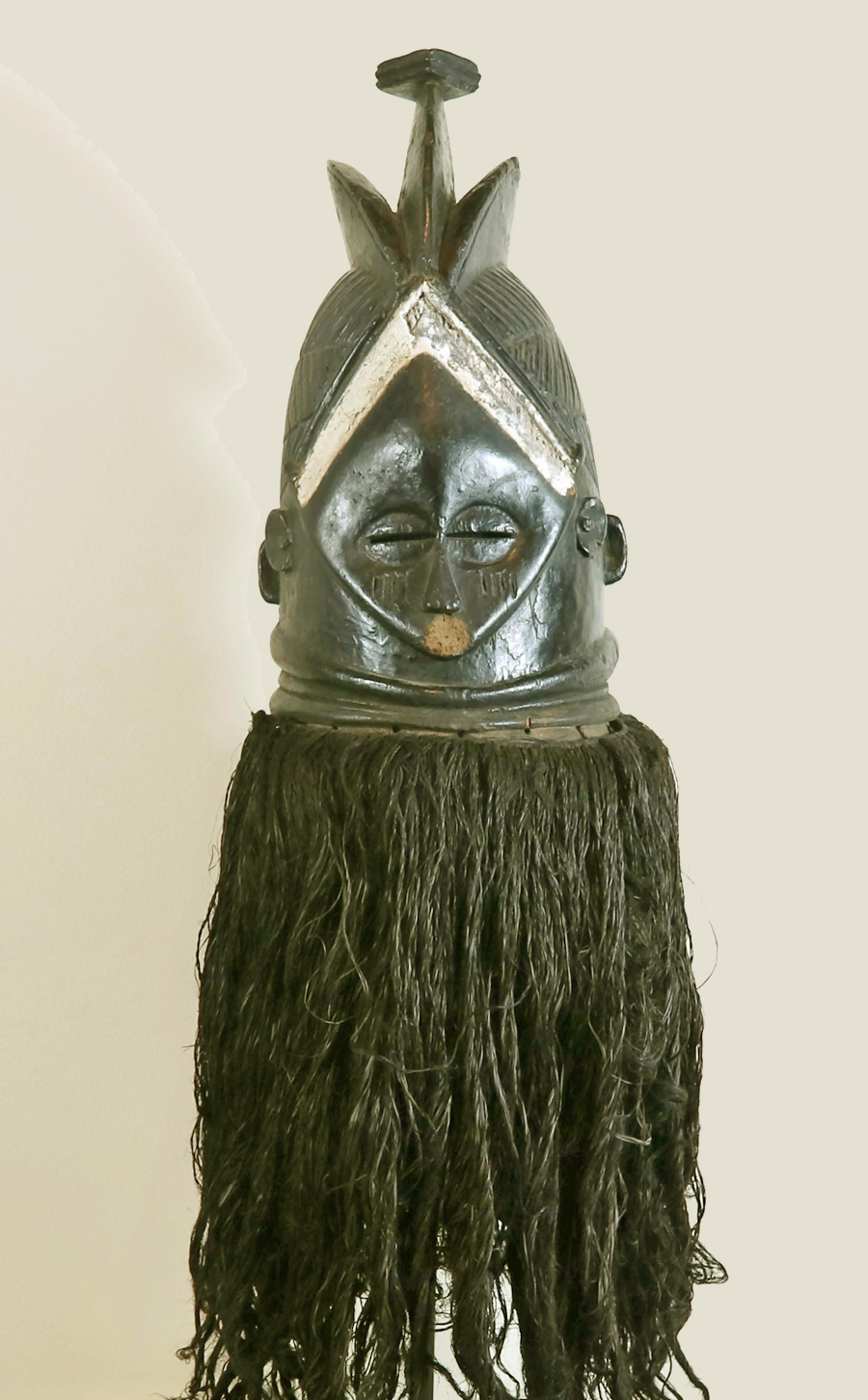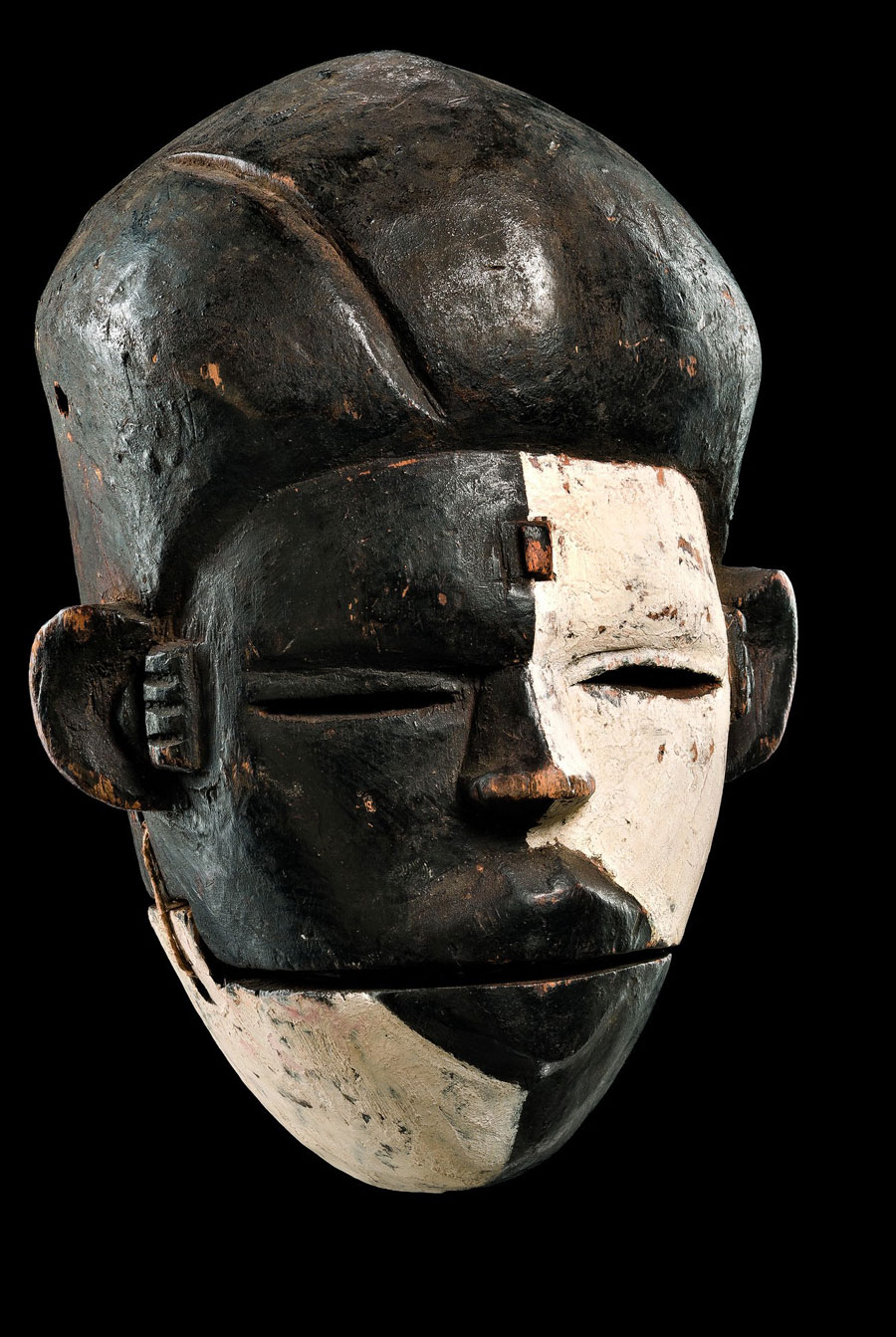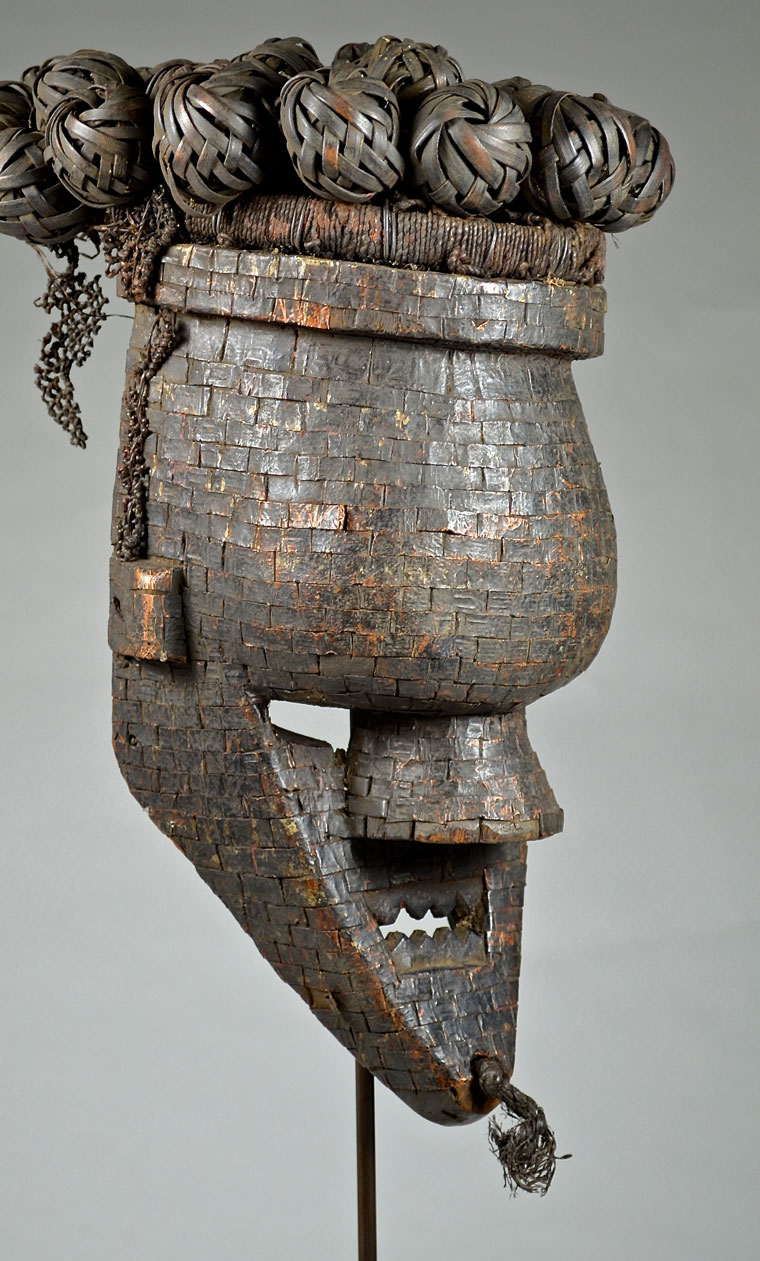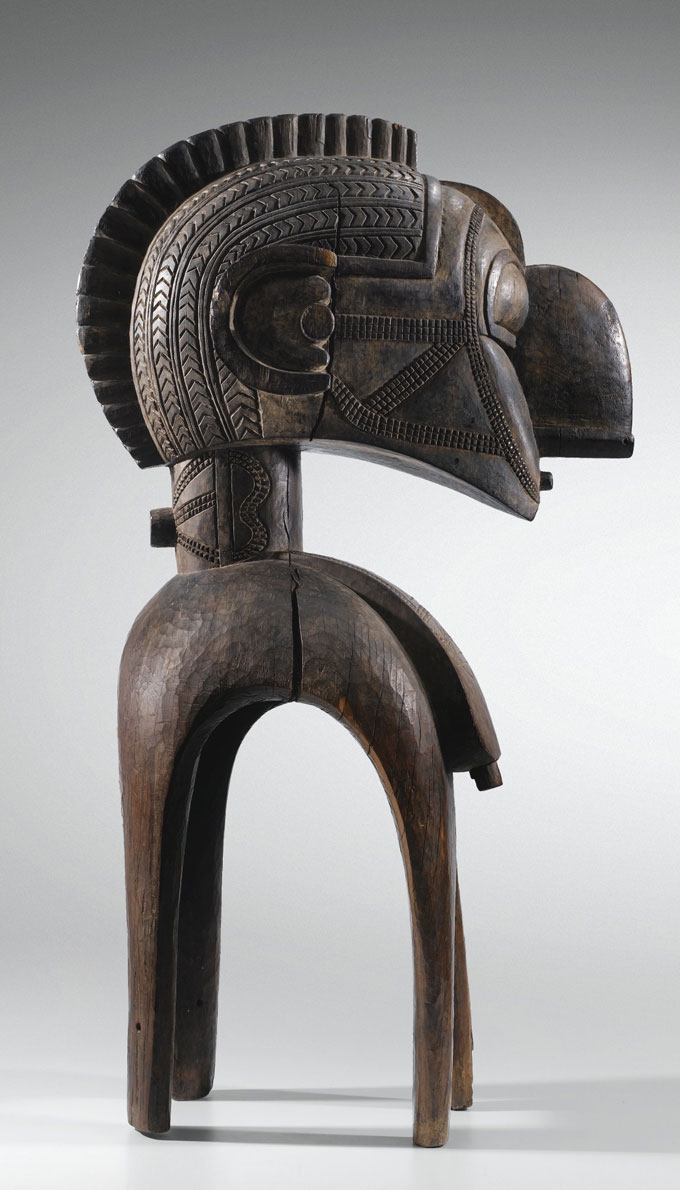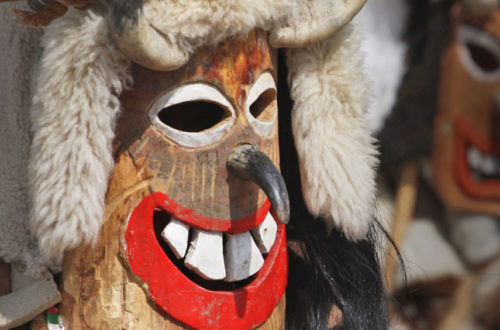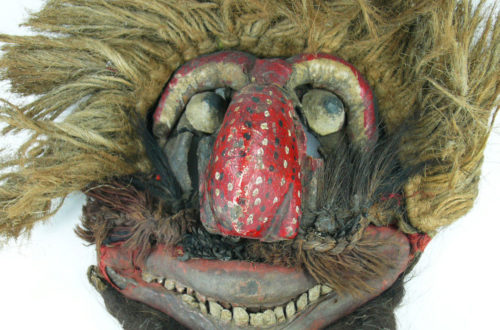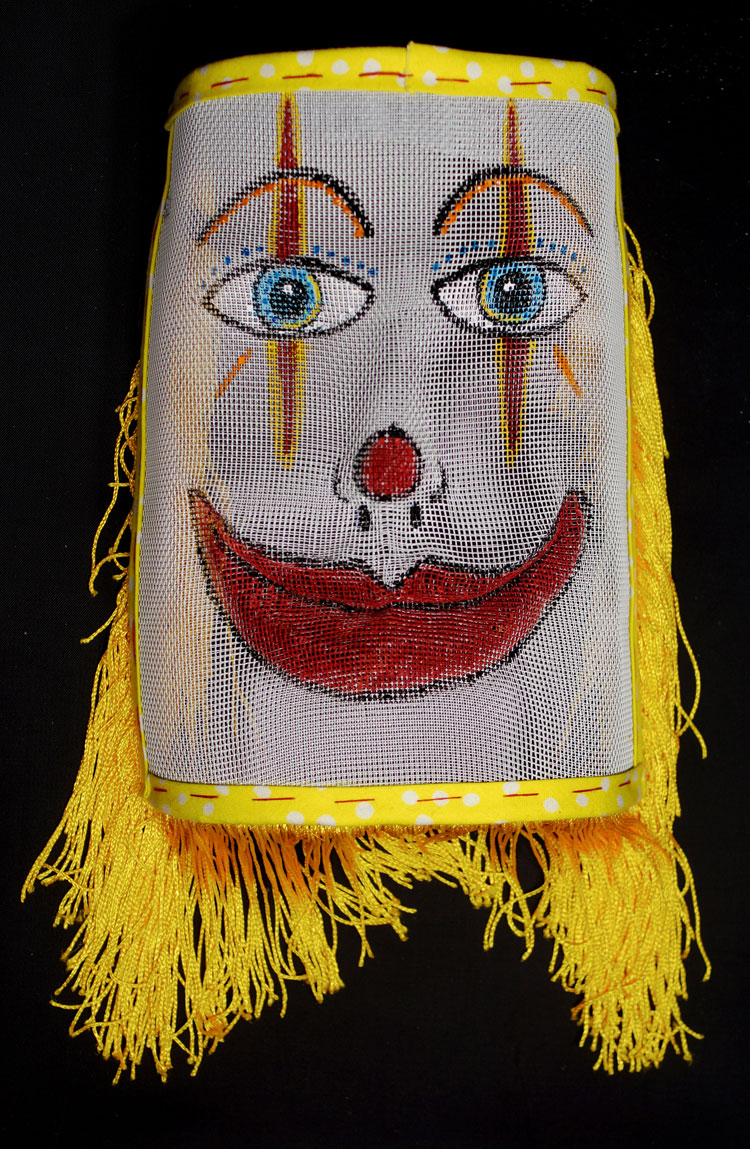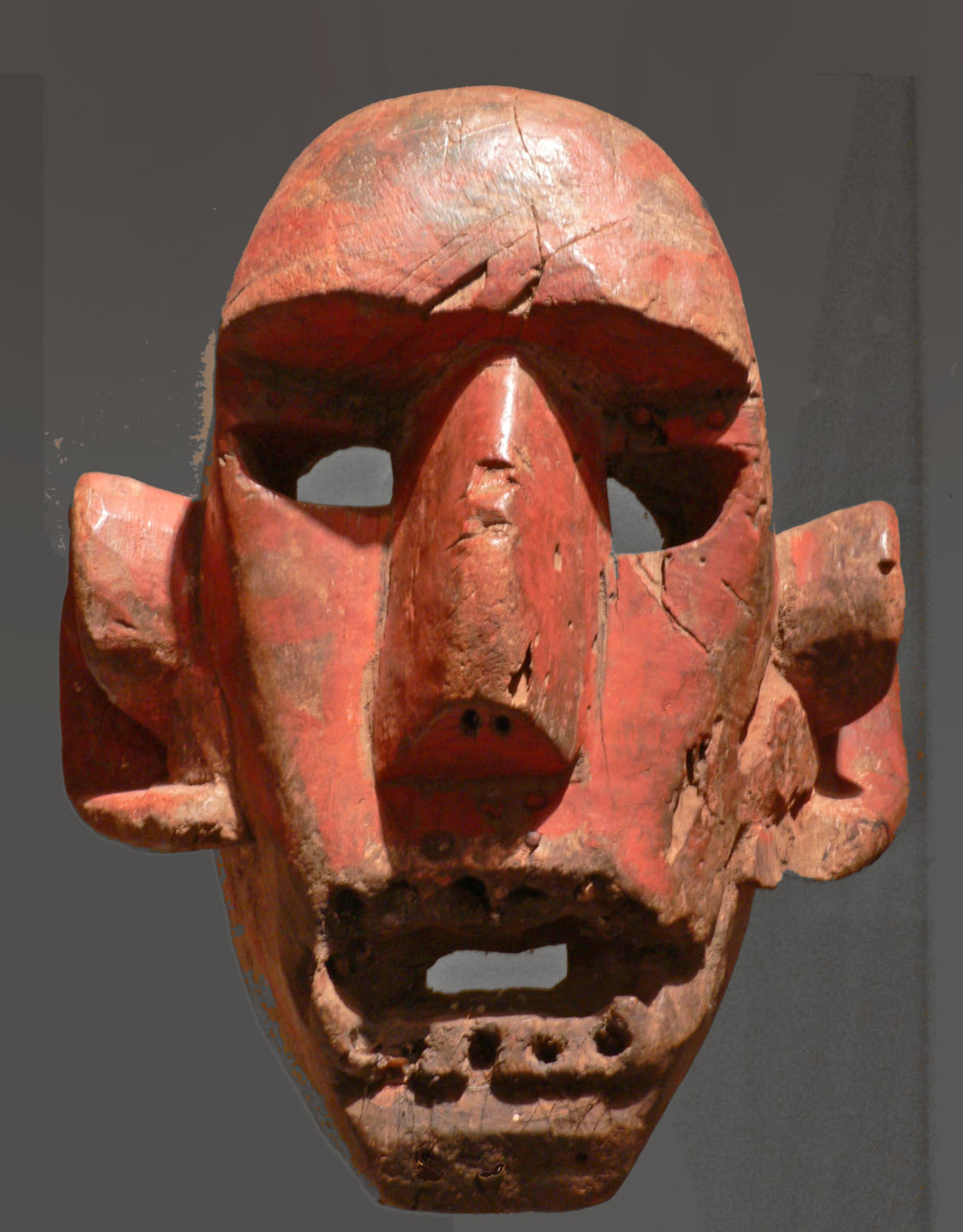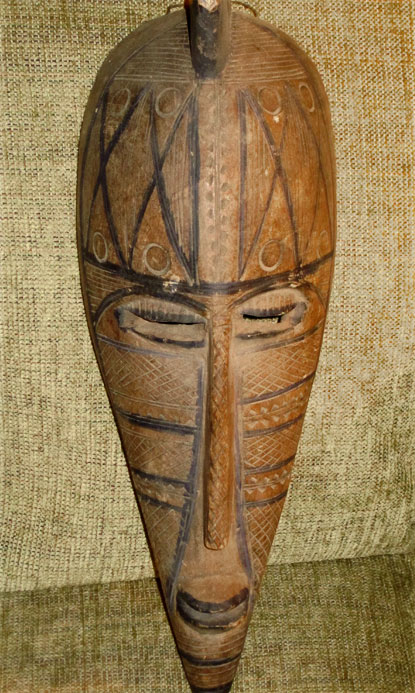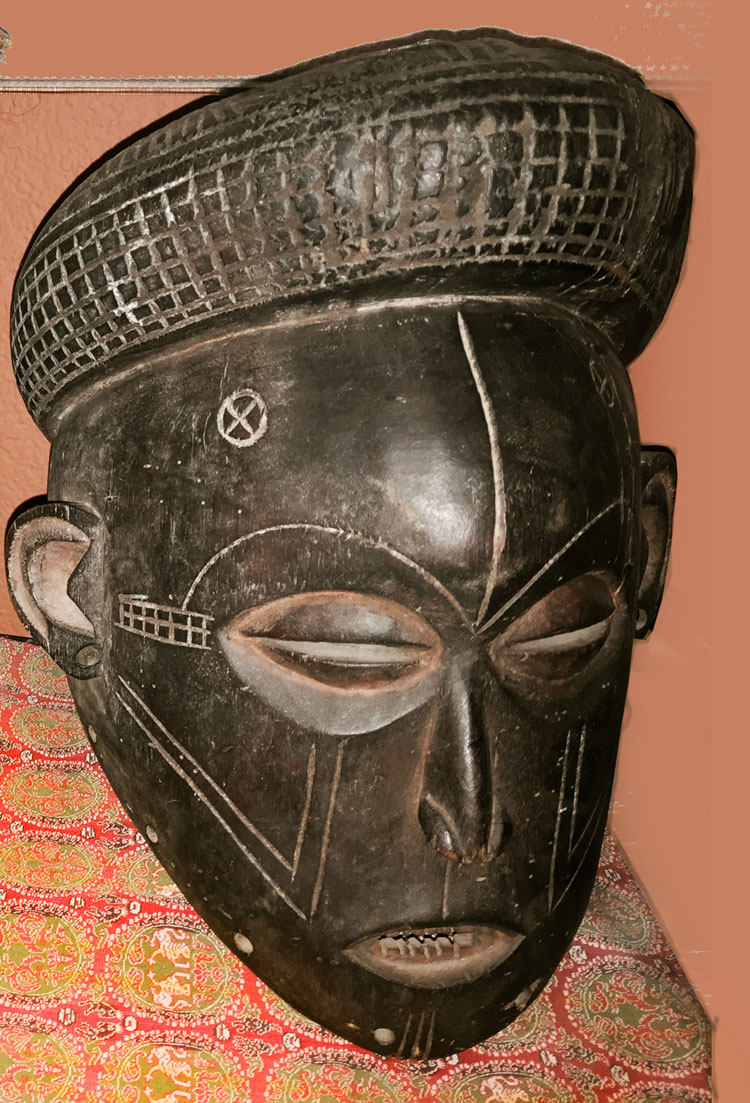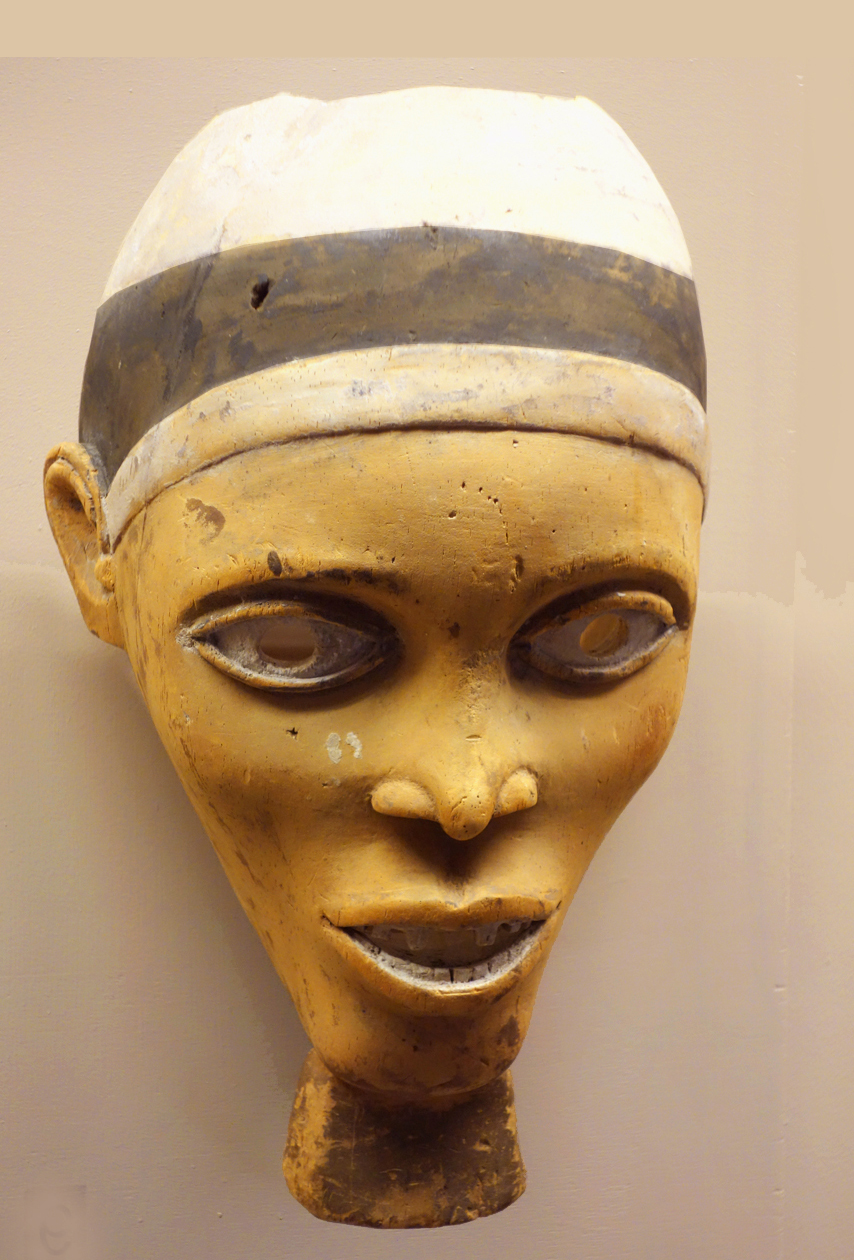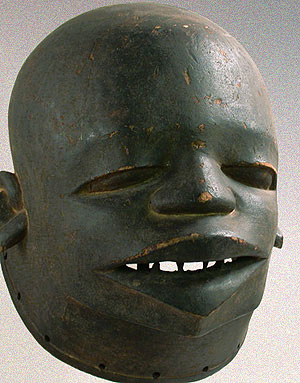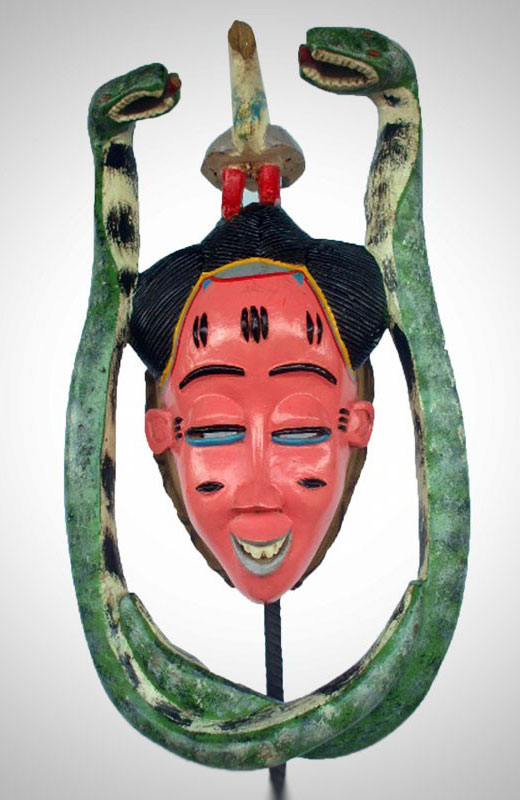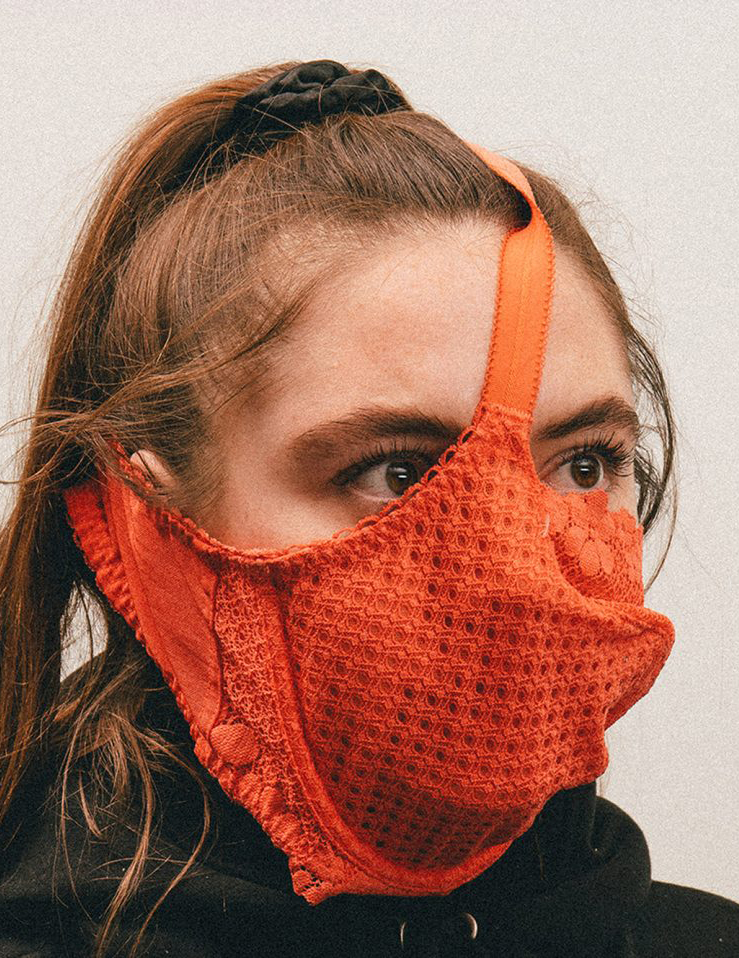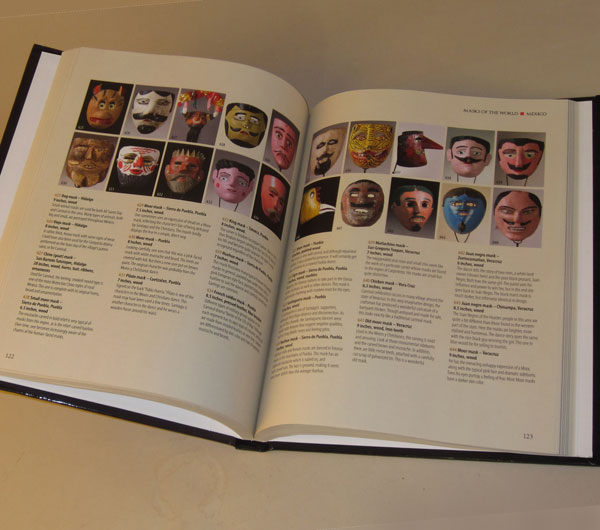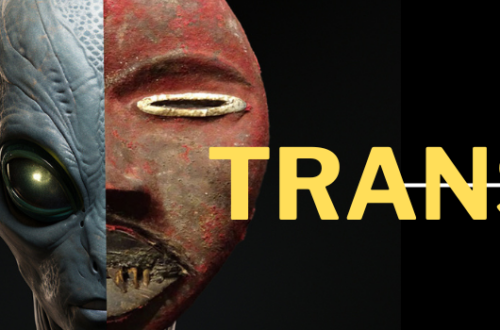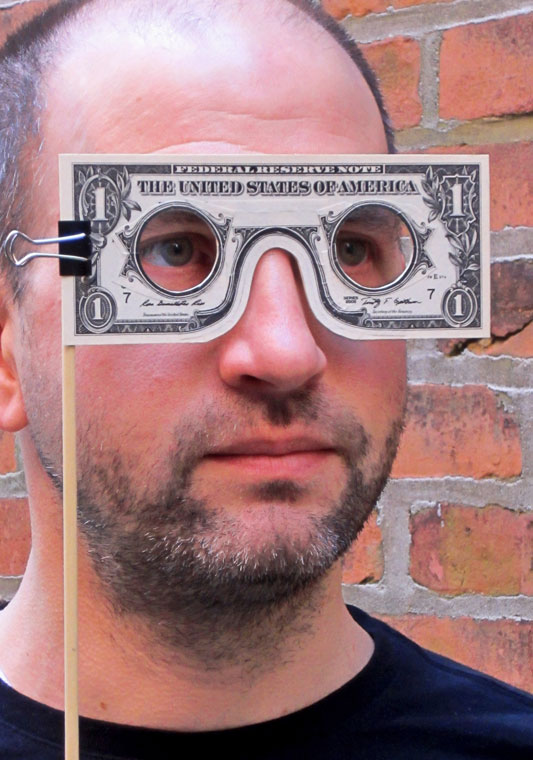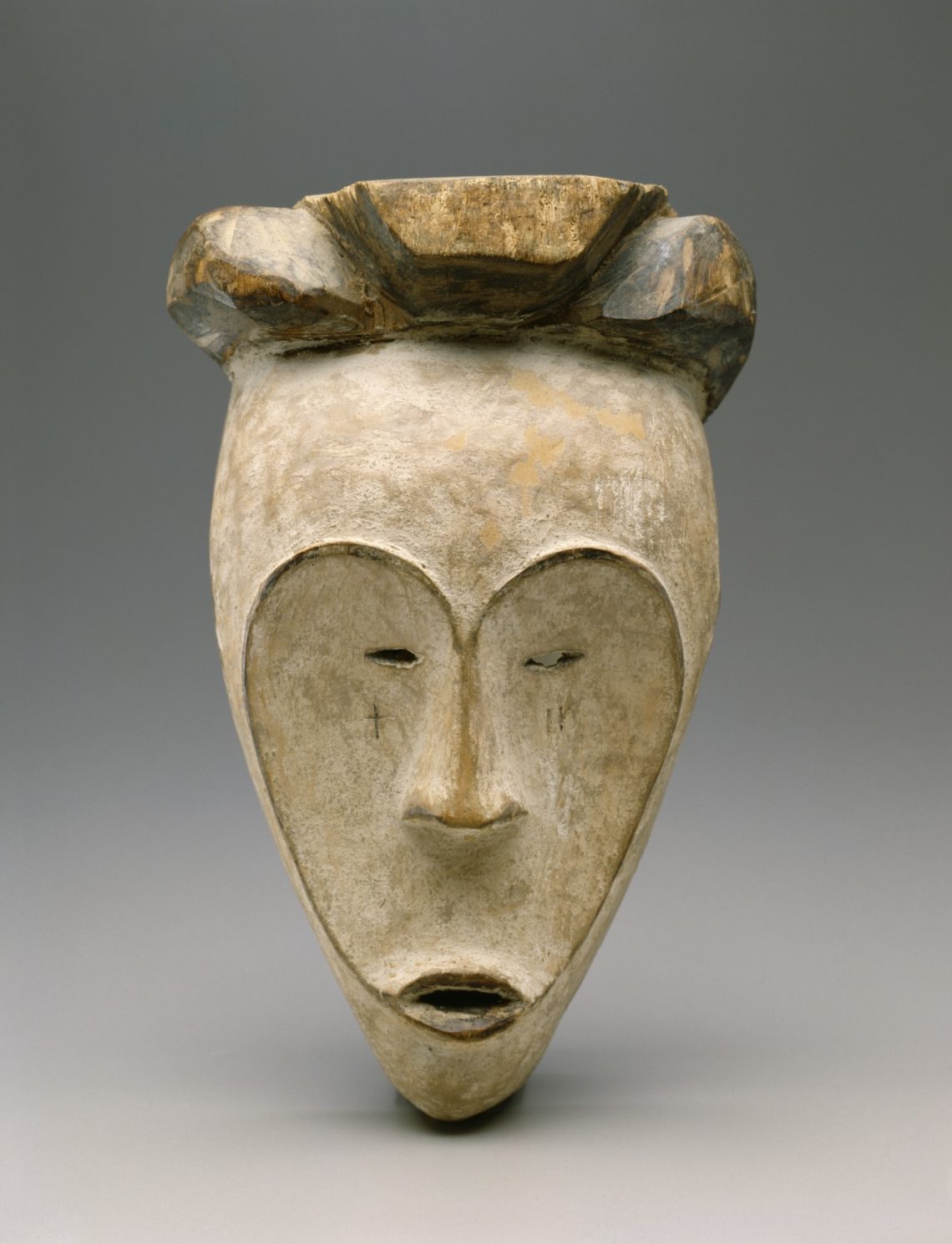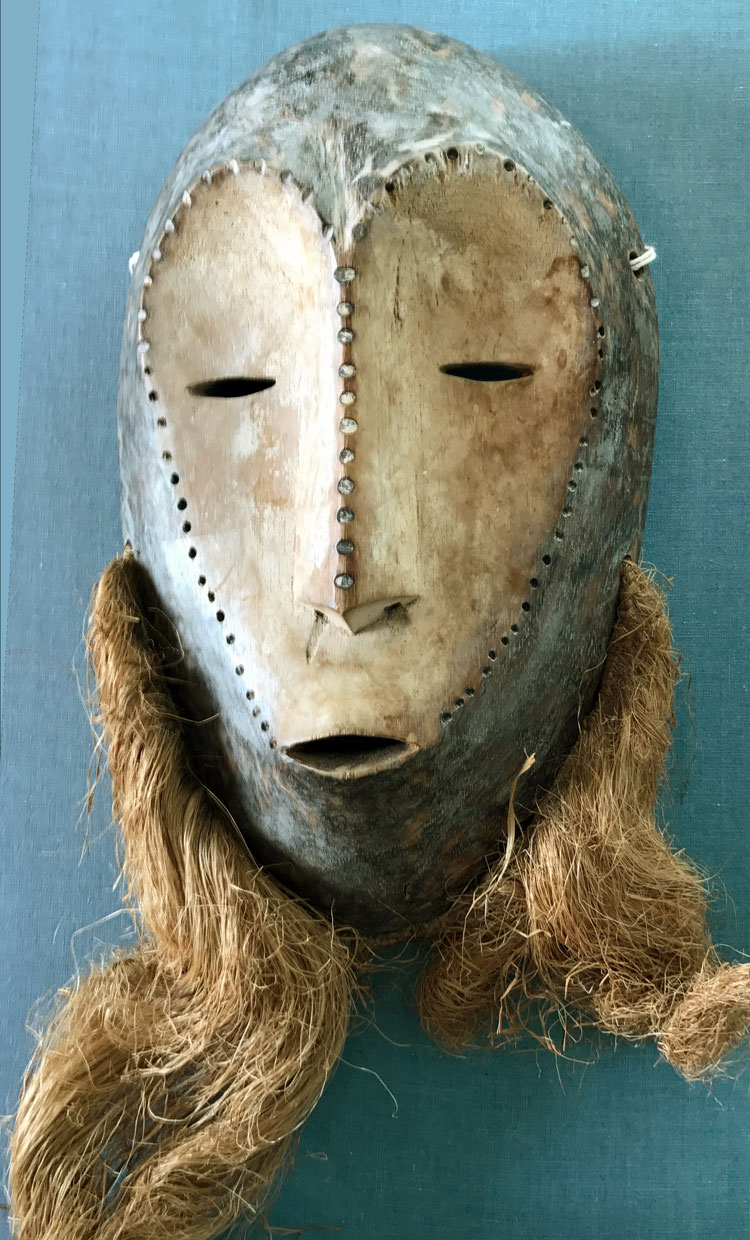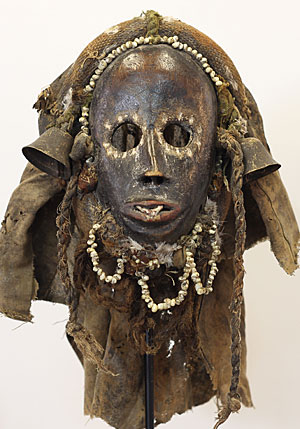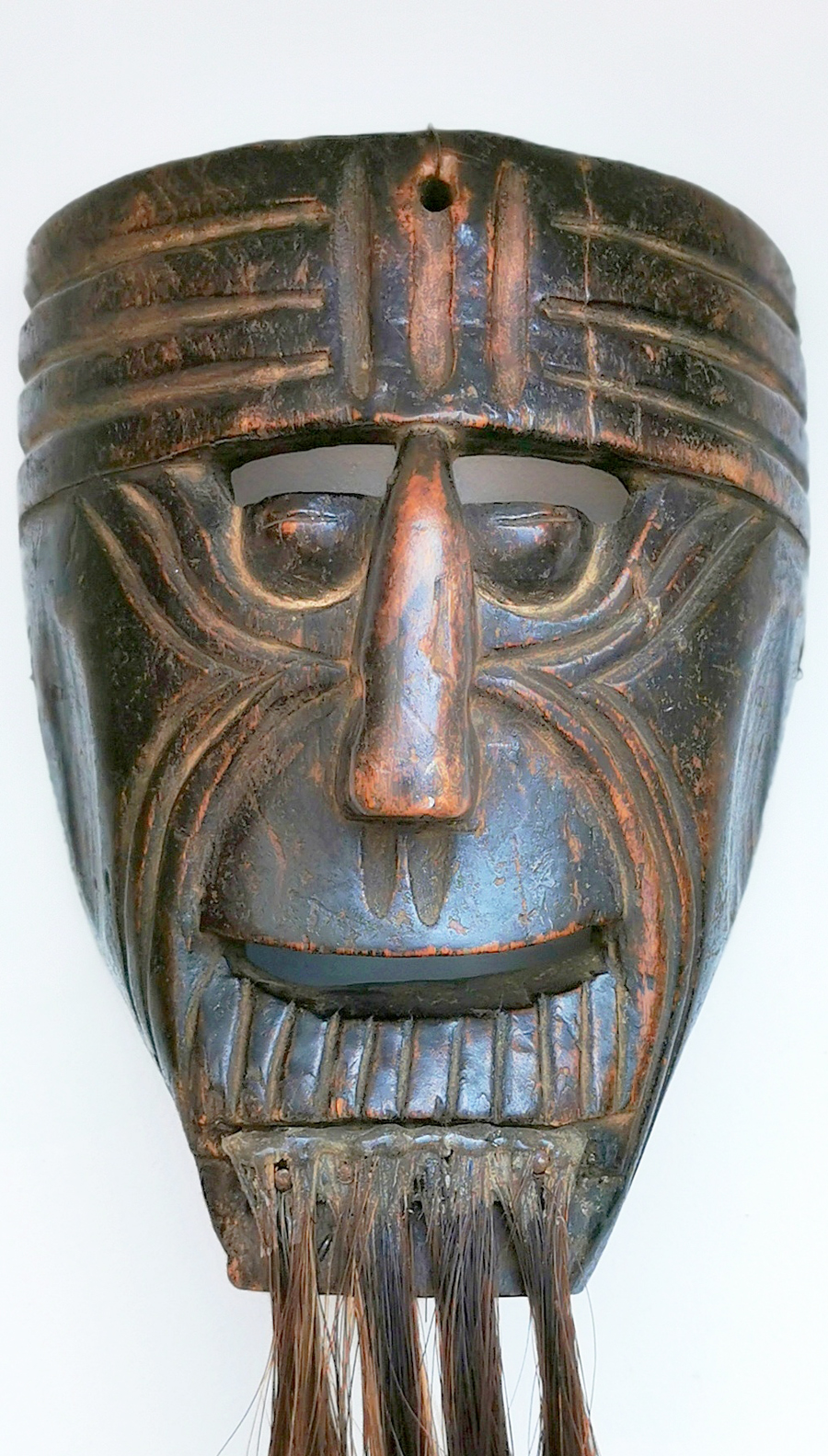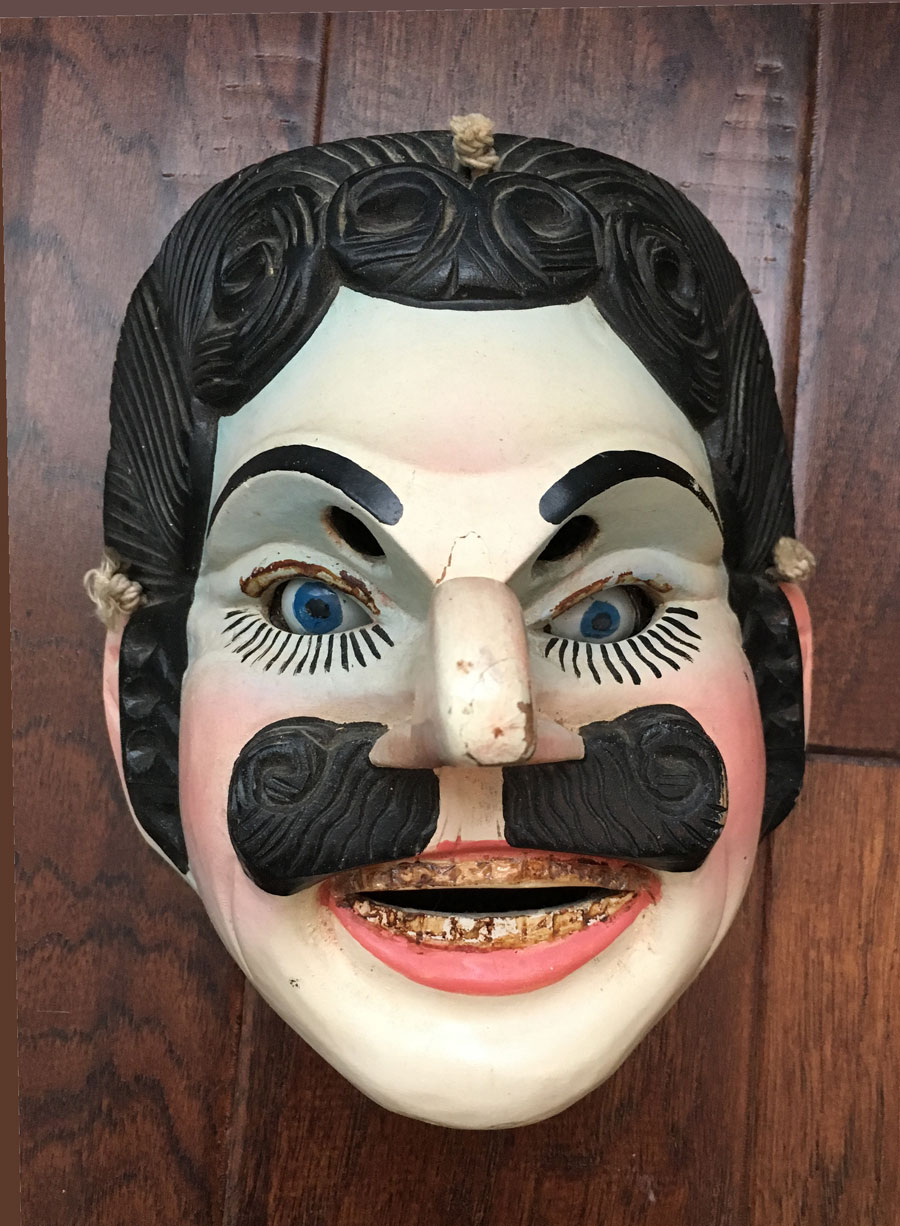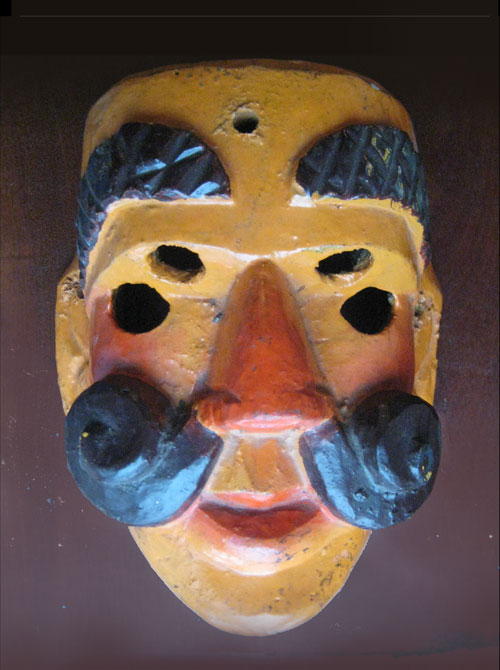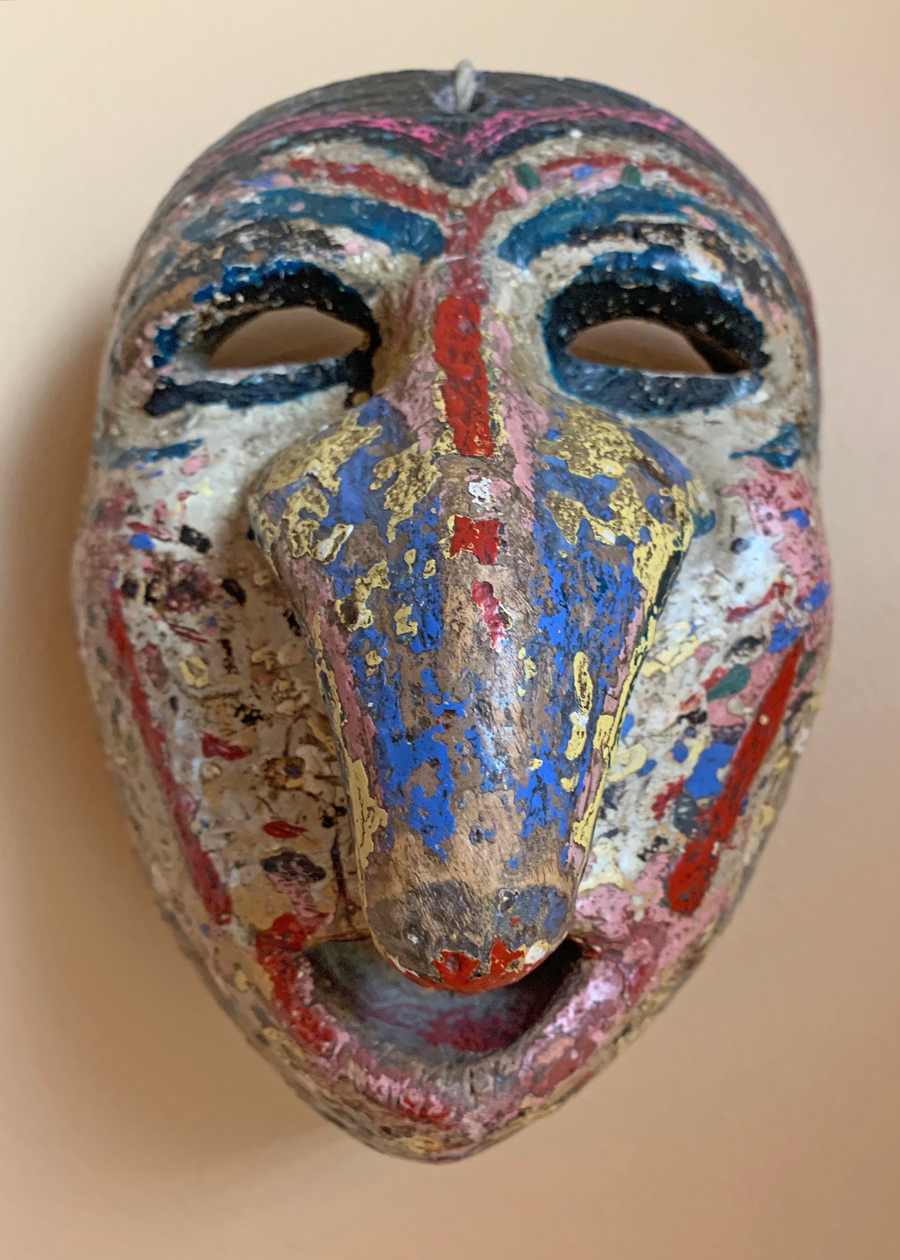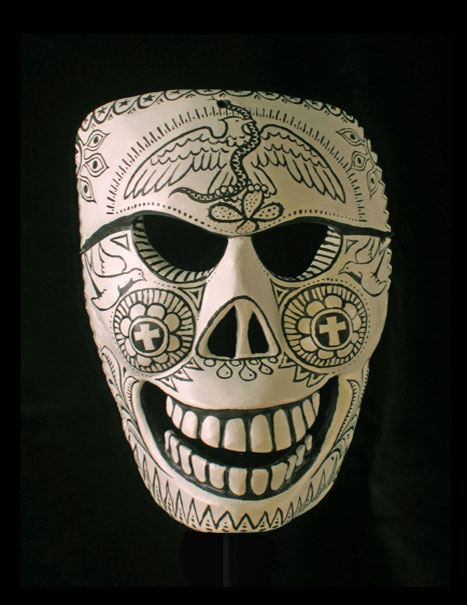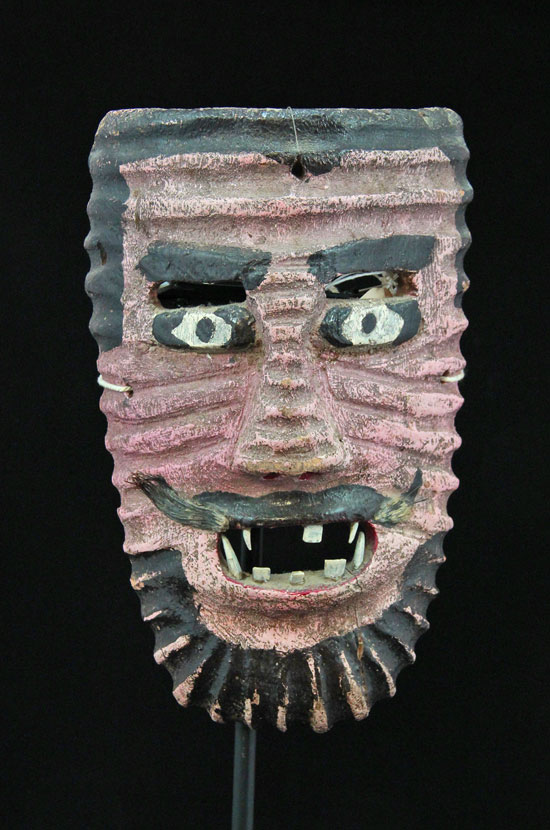Q: Just wondering if anyone can tell me about this mask. It probably weighs 45 lbs. Three feet tall by 1.9 wide, 7 inches deep, it’s huge! Gary, 1761 A: The look of your huge “mask” is a little confusing. It could be a sculpture made for a specific reason, or a big mask held by hand. Whether it is an authentic artifact, or something made for commerce must be determined by others. African or Asian? Perhaps one of our viewers will have a comment. All I can say is that it is very decorative and will display well.
-
-
Mysterious Pende mask
Q: I would like to have your views on the origins of this mask, which I bought for about $40 at an antique dealer in Montreal who was not used to dealing with African masks. As you can see, it is damaged and it seems rather old, and has has a very strong presence. The shape of the face somehow reminds me of some Pende masks I have seen, but this one remains mysterious. Jean-Francois, 1760 A: Despite the wear and damage, this beautifully carving does indeed make a strong presence. Unfortunately, I cannot identify the character it represents or tribal group from which it comes (along the Kwilu River…
-
Bundu mask from Sierra Leone
There are two other Bundus in our archives. This one is different because it has a white decoration and a full skirt. Used by the Sande Society for the passage into womanhood by Mende girls, it is the only mask in Africa that is not worn by men. Note that there are 1759 masks in this website’s archive. Press the “Q” on the right of the home page, type in a word and then press “Enter.” Keep trying different words or combinations until you get what you want. There are about 1000 more masks in the book, Masks of the World by Ibold & Yohn, which you can order on…
-
Court Jester Mask
From hundreds of years ago to today, this famous mask has been used in Europe and the Americas a lot. They can be made of leather, like this one– or plastic, papiermache, cardboard, etc., plus many different colors and designs. They have always been used in theater, carnivals, parties, holidays and celebrations. They can be found in all sorts of places at almost any price. Always fun to collect, you can gradually work your way up to an older, high-quality mask like ours. If you’re an oldster like me, you might need something to do during the pandemic. Bob, 1758
-
Kwere mask from Tanzania
The Kwere people (also called Doei) migrated to what is now Tanzania around 1000 A.D. from south of Mozambique. The Kwere do not have centralized political systems, but instead are based on self-governing matrilineal kin groups. Lineage heads are chosen by community leaders. These leaders are responsible for distributing land and maintaining lineage rituals. Leaders are also in charge of settling disputes between family members and are often attributed with having spiritual powers. Most Kwere believe in mulungu, a god who was associated with rainfall. Most prayers are directed to familial spirits. Religion among the Kwere is a household affair and every family member is responsible for appeasing its ancestral…
-
Yombe mask from DRC
Called a nganga diphomba, this handsome mask would have been made in what was then called the lower Belgian Congo. It is now in the Royal Museum of Central Africa. It was used for many different purposes in ceremonies for the Yombe people. As you can see, the carving is expert, where as the rough chin extension is there for a beard of buffalo hair to be attached. I hope you appreciate this mask as much as I do. The second nganga is a female version from the Brooklyn Museum of Art and was more quickly made and then used much more. Both would get an A. Bob, 1756
-
More pandemic face masks
COVID19 continues to lower the number of mystery masks we receive here at MasksoftheWorld.com. Hopefully a few more of these crazy face masks will brighten your day a little. Bob, 1755
-
African Influences in Modern Art
During the early 1900s, the aesthetics of traditional African sculpture became a powerful influence among European artists who formed an avant-garde in the development of modern art. In France, Henri Matisse , Pablo Picasso , and their School of Paris friends blended the highly stylized treatment of the human figure in African sculptures with painting styles derived from the post-Impressionist works of Cézanne and Gauguin . The resulting pictorial flatness, vivid color palette, and fragmented Cubist shapes helped to define early modernism. While these artists knew nothing of the original meaning and function of the West and Central African sculptures they encountered, they instantly recognized the spiritual aspect of the…
-
Rare Guatemalan mask
Q: It is true that the style could be confused with some primitive masks from other parts of the world. Nevertheless, it is Guatemalan, but so different from the usual designs. No big moustache or sideburns… It is a Xacalcoje, from of the dance of the Xacalcojes in Aldea Chuisuc, a small village in the province of Totonicapán (Quiché highlands). It is cedar hardwood with a beautiful patina on the back. Probably early or mid XX century. To be noted, the “muted smile” as also found on the second one presented on the page devoted to them on the site of the late Bryan Stevens: https://mexicandancemasks.com/?p=3898. Not all Xacalcojes have…
-
Mystery mask from Oaxaca
Q: I bought this mask in Oaxaca in 1976. I have been collecting masks since 1974 and have not seen anything quite like this. Is it a viejito? I’m at a loss. Raul, 1752 A: The state of Oaxaca, on the lower Mexican Pacific coast, makes a lot of different-looking masks. Often they are creative, but still manage to be appropriate for a traditional dance. Note the photo of a collector’s wall full of Oaxacan masks. Many of them I haven’t seen before. This crazy, big-nosed guy is a challenge for me. I have no idea what role he might play in a dance. Mexican masks are my favorites, and…
